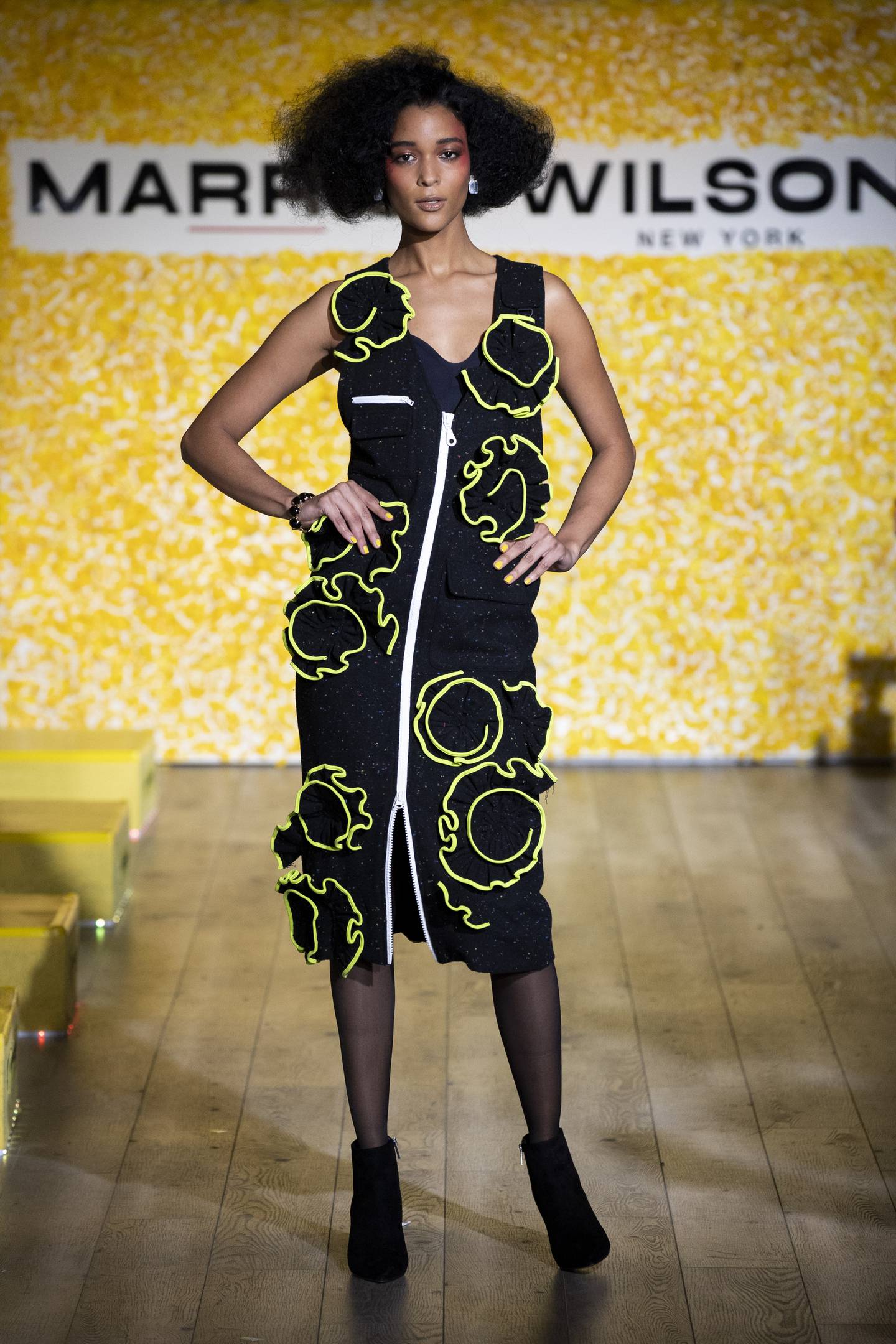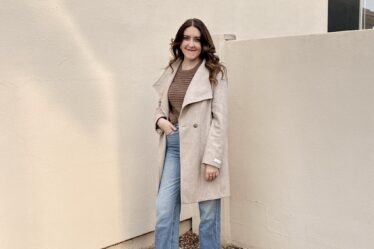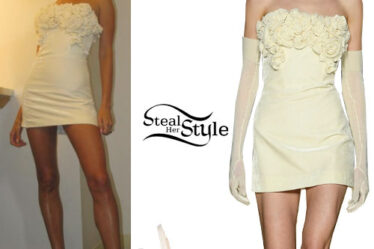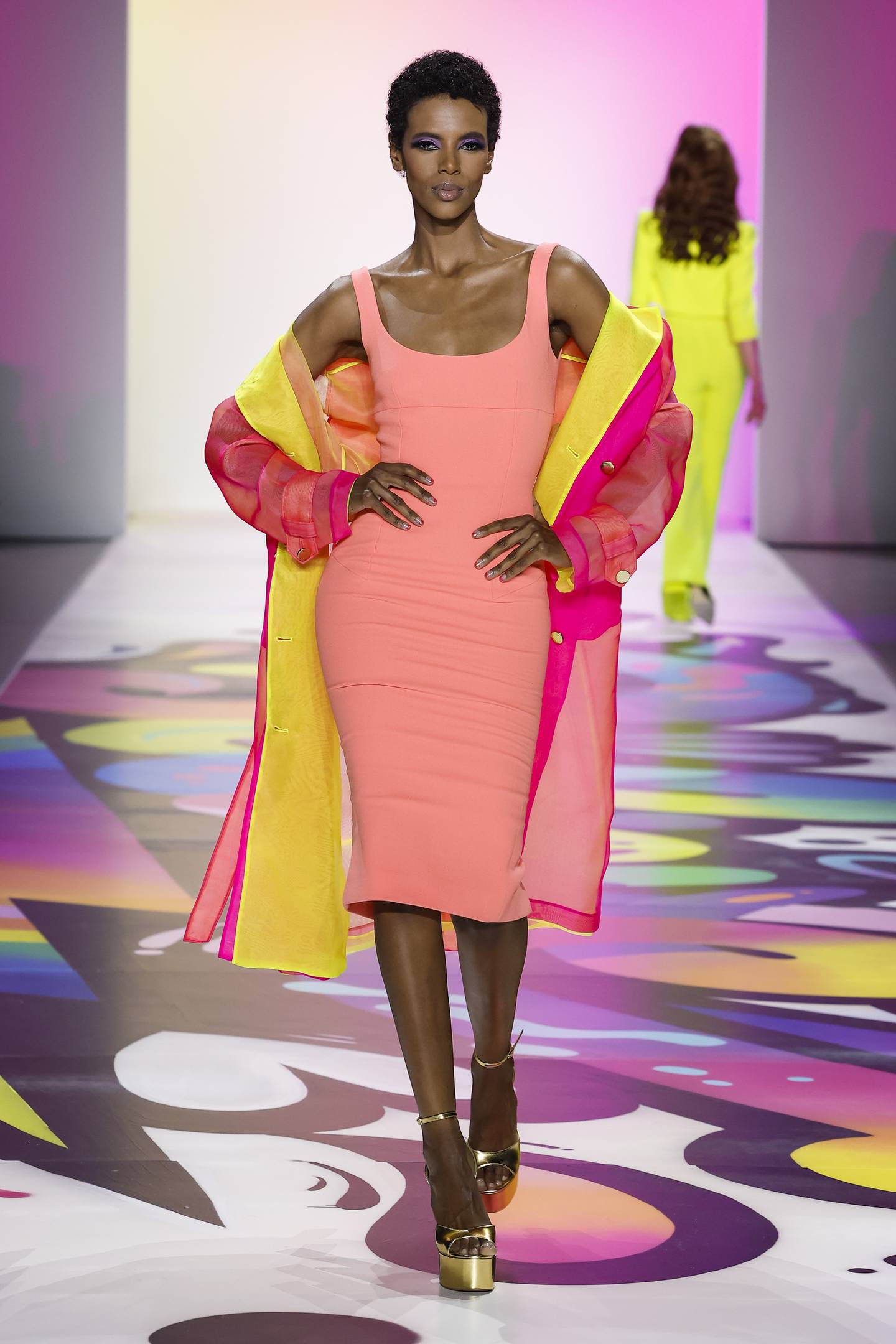
When the first model strutted down the runway at Sergio Hudson’s Fall/Winter 2023 showing on Saturday night in a neon yellow Blazer and matching shorts, ‘90s club anthem “Show Me Love” by Robin S was blaring from the speakers and attendees swayed to the beat. iPhones lit up the room and VIP guests including Kimora Lee Simmons and talk show host Sunny Hostin visibly oohed and ahhed from the front row.
In the days that followed, glossy publications like Vogue and Harper’s Bazaar wrote about the “invigorating” ‘90s celebration featuring models with “pizzazz.”
A week before, the designer was vying for a cash infusion of $200,000 for his business at The Fifteen Percent Pledge’s annual gala. He walked away with the second place prize, a grant for $35,000. His Fall/Winter show’s inspiration, a mural Hudson spotted outside of his Los Angeles workroom with the message “Believe,” came from a time just a few years ago when the designer was struggling to get his brand off the ground.
“In that time, we were believing for a lot things,” Hudson said. “I was believing for my business… I was believing to eat.”
Many emerging designers have faced the smoke-and-mirrors challenge that is synonymous with fashion — pressure to produce big, splashy moments and garments for mass consumption while struggling to make ends meet behind the scenes. There is a fragility to fashion week success, including a dearth of funding needed to set brands up for the long-term and insulate them from the economy’s ups and downs.
BIPOC designers often feel they must do all of the above while feeling pressure to make big strides for racial equity and other forms of inclusivity. In many cases this means weaving in cultural messaging or political commentary into every fashion show or, when their business makes a financial gain, receiving the proverbial side eye for being perceived as not immediately paying it forward.
Each designer approaches this challenge in their own way; some enthusiastically adopt the cause of pushing for greater representation in fashion, others do so reluctantly or shun any sort of labels. For his part, Hudson said he hopes to get to the place where he can bring more designers of colour along.
For now, his position almost perfectly encapsulates the promise of many talented Black designers in fashion today. He’s dressed some of the world’s most prominent women, including Michelle Obama and Beyoncé, and his line is carried at luxury mainstays like Bergdorf Goodman, Saks Fifth Avenue and Neiman Marcus. But he still needs external support and consistent media coverage to sustain his business over the long term.
“Let’s just be honest, it’s America,” Hudson said of fashion’s recent progress on inclusivity. “I think they’ve made a lot of strides, but they have a way to go and… just by the nature of who we are as [Black] people, we naturally do that [inclusivity] thing. So I feel like they have to catch up.”
Fashion Designer, Change Agent or Both?
Since the summer of 2020, pledges from fashion brands and retailers alongside efforts from industry trade groups and newly-formed nonprofit organisations like the Black in Fashion Council and The Fifteen Percent Pledge, have pushed the fashion industry toward diversity in certain areas.
In September, for the first time the CFDA’s official New York Fashion Week calendar includes nearly 30 Black designers, comprising 25 percent of the official schedule. This season, Black designers made up about 15 percent of the show calendar, including the debut of heralded streetwear designer Heron Preston.
Nike provided show funding, including covering production and promotion costs, for four Black and Latino designers — Tia Adeola, Luar, No Sesso and Who Decides War — who showed during NYFW. The brand also outfitted models with sneakers.
New York has moved faster than other markets to improve the industry’s track record when it comes to diversity. This month, Stella Jean, the only Black member of The National Chamber of Italian Fashion, announced she would no longer show at Milan Fashion Week, alleging the nonprofit organisation “abandoned” plans to support minority designers. The chamber has denied Jean’s allegations.
But even as some areas of the industry make strides, progress has stalled in other areas, from media coverage to funding, all of which add an extra layer of challenges to the already considerable hurdles facing any emerging designer.
At a Feb. 10 NYFW-adjacent event hosted by Black-owned hat brand Wear Brims to celebrate Black History Month, founder Archie Clay III said he was excited about landing shelf space in Nordstrom, part of the retailer’s commitment to the Fifteen Percent Pledge.
But Clay was also uneasy about the near-term growth prospects of the business amid ongoing chatter of a recession and rising expenses for business imperatives like marketing and sourcing.
“The challenge is always going to be financial,” he said. “Running a fashion brand is expensive — shipping is expensive, sourcing materials is expensive, digital marketing is expensive now that we really have to grow beyond social media.”
More Than a Label
Many Black designers continue to struggle to find the sweet spot between championing their diversity and helping to move the industry forward — and pigeonholing themselves to the ethnic aisle in a department store.
The challenge has gotten trickier in a post George Floyd world where leaning into one’s diversity can be a throughway into conversations with major corporations and industry stakeholders looking to boost their diversity bonafides.
“The interest in my brand has certainly grown from past seasons,” said Guyanese-American designer Marrisa Wilson, who’s currently in appointments with several major department stores following her Fall/Winter show last Saturday. “But it is definitely hard to break through the noise … and not just being labelled as a Black designer.”
Many designers find themselves doing the heavy lifting to move the industry forward, whether they asked for that role or not.
The same is true even for other forms of inclusion such as body size, an area for which fashion designers have received significant flack this season.
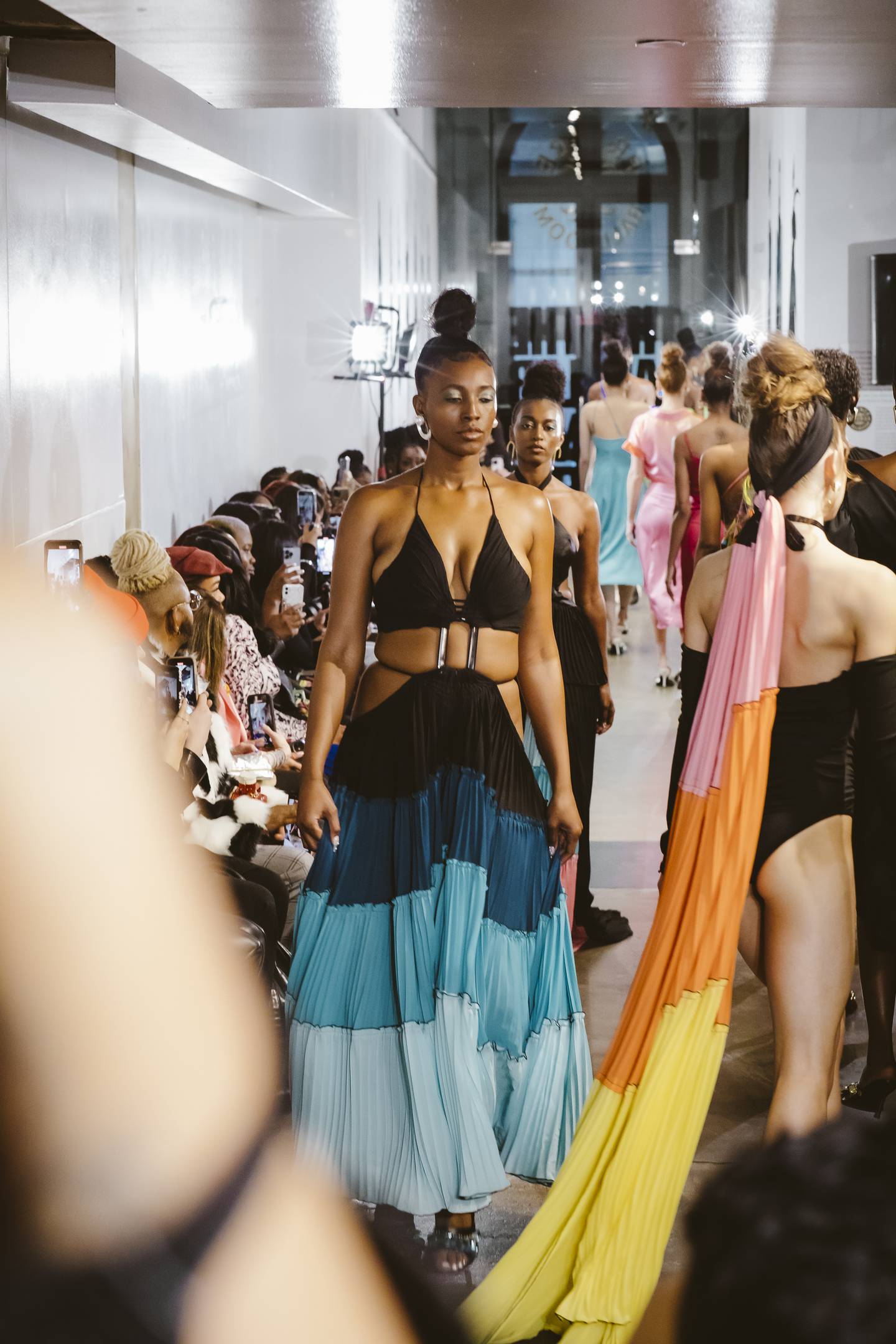
Where fashion week attendees noticed fewer plus-size or older models on the runway this season, that wasn’t the case at many shows held by Black designers. Veteran model Veronica Webb, age 58, walked in Sergio Hudson’s show. (She was joined by Beverly Johnson, age 70, at the designer‘s show last February, too.) At Bohn Jsell, co-founders Kasha Reavis and John Bell’s show featured curvy models in bikinis and strappy dresses, several of whom had visible stretch marks along their buttocks, for their “By the Sea” resort collection.
“We’ve definitely wanted to showcase different women in different body types,” said Reavis. “Myself, I’m not like a model or size two or anything like that. So I want to bring that home that you can actually wear these clothes.”
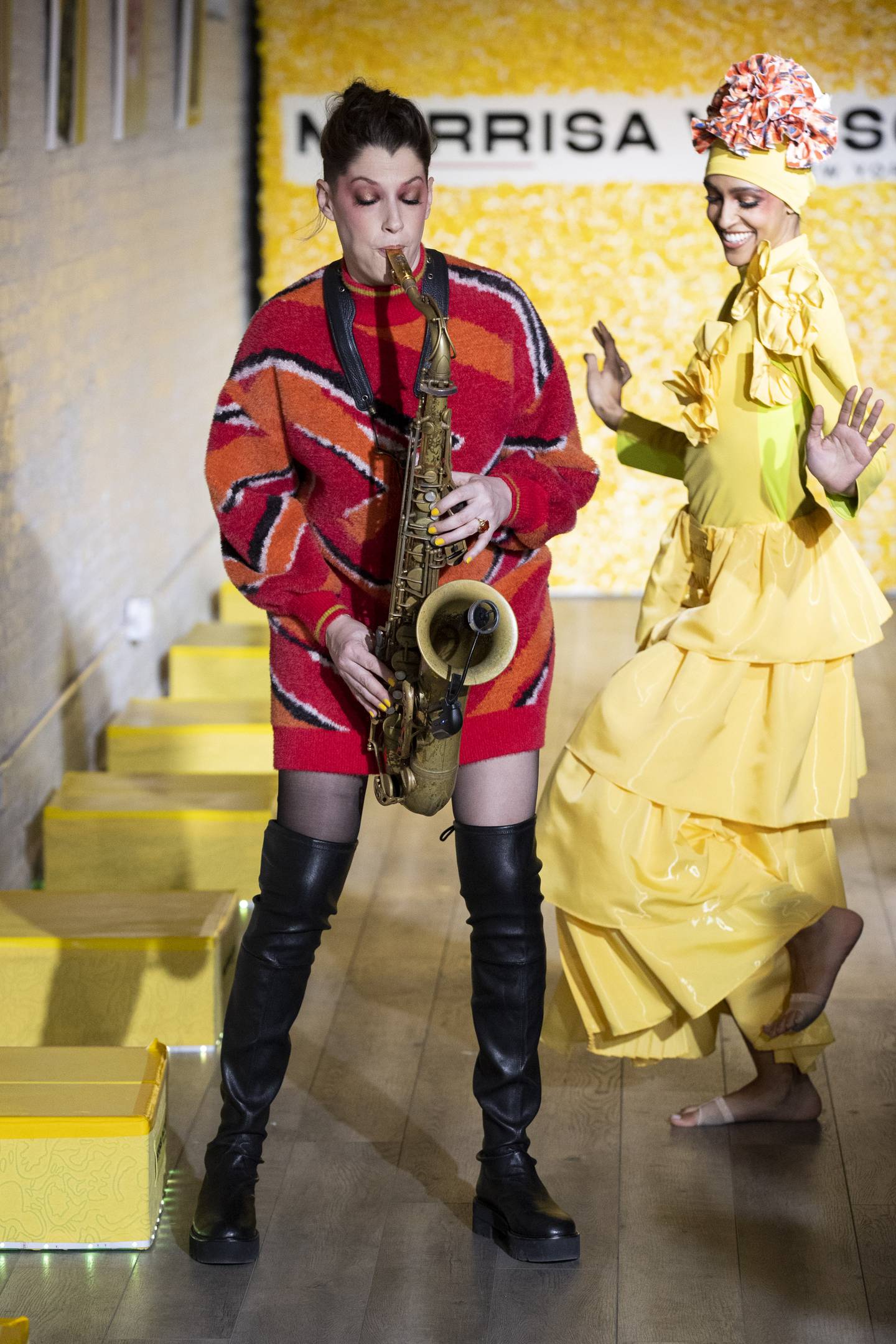
Wilson’s Fall/Winter show, dubbed ‘Rhythmic,’ incorporated movement inspired by the founder’s dance background as well as the famed American dancer Katherine Dunham. Wilson casted nine models in the traditional way, via a fashion week production house. But the other models in the show were “real women” with “real bodies” — including several dancers and musicians who played in the jazz band that performed during the show.
“What was motivating for me is that that’s where my customer actually is,” said Wilson, whose brand offers an extended size range from zero to 20. “Those are the ones who are actually buying from me … so it’s important for me to be able to show that in my show experiences because it’s not just about having that super idealised perspective.”
When asked to define their business goals for the next few months, years or even decades, designers like Wilson and Hudson — who envisions his brand rivalling the success of Ralph Lauren one day — are striving to get beyond fleeting wins.
“It’s not just about social media buzz, it’s really important to see that I’m an artist,” Wilson said. “I have a very strong technical background, I roll up my sleeves, and I am the one painting and working. And it’s not just about having a big blowup flashy [moment].”
